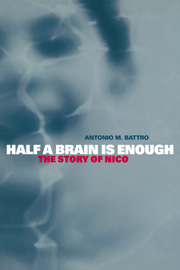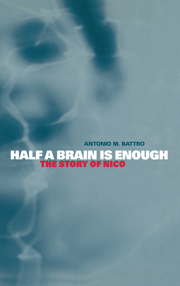The Imitative Mind
Imitation guides the behaviour of a range of species. Scientific advances in the study of imitation at multiple levels from neurons to behaviour have far-reaching implications for cognitive science, neuroscience, and evolutionary and developmental psychology. This volume, first published in 2002, provides a summary of the research on imitation in both Europe and America, including work on infants, adults, and nonhuman primates, with speculations about robotics. A special feature of the book is that it provides a concrete instance of the links between developmental psychology, neuroscience, and cognitive science. It showcases how an interdisciplinary approach to imitation can illuminate long-standing problems in the brain sciences, including consciousness, self, perception-action coding, theory of mind, and intersubjectivity. The book addresses what it means to be human and how we get that way.
- Interdisciplinary research, including developmental, evolutionary, comparative, cognitive, and neuroscience perspectives
- International perspective - researchers drawn from around the world to set the future research agenda
Reviews & endorsements
Review of the hardback: 'Most of the book's merit is in the chapters themselves, most of which are skillfully written such that their relevance goes beyond the limits of the discipline at hand and illuminates issues relevant to neighboring disciplines as well. The two editors are leading figures in the fields of developmental and experimental psychology, and their respective research contributions blend well conceptually.' Nature Neuroscience
Review of the hardback: 'Despite the variety of disciplines and viewpoints represented, the editors, Meltzoff and Prinz, were able to foster a strong sense of coherency by encouraging the authors to make strategic cross-references to each other's papers. Without exception the essays are rich in empirical data. Experiments are viewed, and in a few cases previously unpublished experiments are discussed.' Infant and Child Development
Product details
April 2002Hardback
9780521806855
364 pages
229 × 152 × 24 mm
0.7kg
Available
Table of Contents
- Part I. Introduction and Overview:
- 1. An interdisciplinary introduction to the imitative mind and brain Wolfgang Prinz and Andrew N. Meltzoff
- Part II. Developmental and Evolutionary Approaches to Imitation:
- 2. Building blocks for a developmental theory of imitation Andrew N. Meltzoff
- 3. Imitation and imitation recognition: functional use in preverbal infants and nonverbal children with autism Jacqueline Nadel
- 4. Self-awareness, other-awareness, and secondary representation Jens B. Asendorpf
- 5. Notes on individual differences and the assumed elusiveness of neonatal imitation Mikael Heimann
- 6. Ego function of early imitation Philippe Rochat
- 7. The imitator's representation of the imitated: ape and child A. Whiten
- 8. Seeing actions as hierarchically organised structures: great ape manual skills Richard W. Byrne
- Part III. Cognitive Approaches to Imitation, Body Scheme, and Perception-action Coding:
- 9. Experimental approaches to imitation Wolfgang Prinz
- 10. Imitation: common mechanisms in the observation and execution of finger and mouth movements Harold Bekkering
- 11. Goal-directed imitation Merideth Gattis, Harold Bekkering and Andreas Wolschläger
- 12. Visuomotor couplings in object-orientated and imitative actions Stefan Vogt
- 13. On bodies and events Barbara Tversky, Julie Bauer Morrison and Jeff Zacks
- 14. What is the body schema? Catherine L. Reed
- Part IV. Neuroscience Underpinnings of Imitation and Apraxia:
- 15. From mirror neurons to imitation: facts and speculations Giacomo Rizzolatti, Luciano Fadiga, Leonardo Fogassi and Vittorio Gallese
- 16. Cell populations in the banks of the superior temporal sulcus of the macaque and imitation T. Jellema, C. I. Baker, M. W. Oram and D. I. Perrett
- 17. Is there such a thing as a functional equivalence between imagined, observed, and executed action? Jean Decety
- 18. The role of imitation in body ownership and mental growth Marcel Kinsbourne
- 19. Imitation, apraxia, and hemisphere dominance Georg Goldenberg and Joachim Hermsdörfer.







